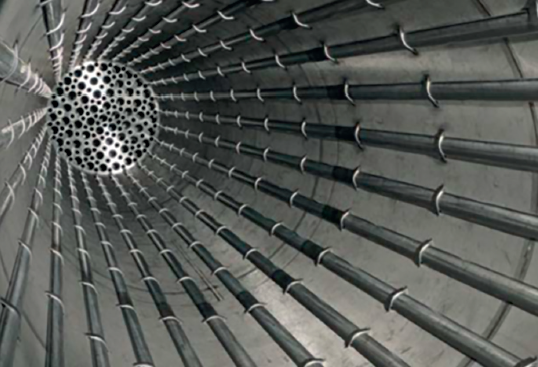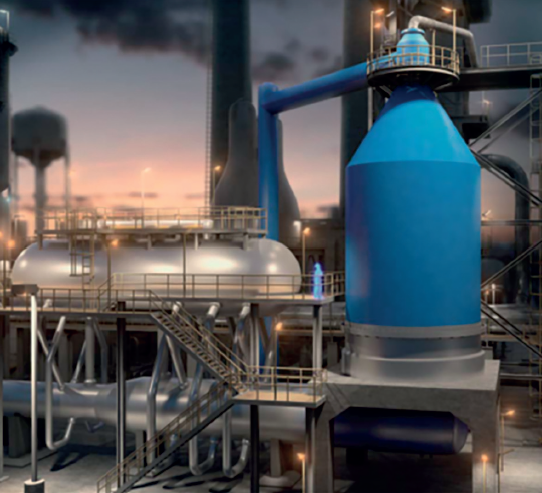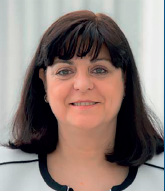Honest, focused and inspirational: all words which apply in abundance to Maria Jose Landeira Oestergaard. She has a gift for creating connections with those around her, as Stainless Steel World can confirm after a pleasant meeting with this charismatic Manager – Hardware Support Group, Mechanical Department, at Haldor Topsoe.
By KCI Editorial
Many people have a good reason to thank Haldor Topsoe, even though they may not be aware of it. Haldor Topsoe plays a key role in helping the agriculture industry meet the global demand for food, as it supplies catalysts used to produce fully half of the world’s fertilizer production. In addition to developing and manufacturing numerous catalysts for use throughout the chemical and refining industries, other key activities include developing and licensing process technology as well as developing proprietary equipment.
Given Haldor Topsoe’s scope, it is no surprise that the company has a fully fledged Hardware Support Group. Here, staff are responsible for preventing equipment failures and costly unexpected plant shutdowns by conducting Finite Element Analysis, advising on alloy selection, giving recommendations for welding, indicating whether heat treatment is advisable, and so forth. Support is provided for product innovation, equipment design review, fitness for service, and root cause analyses wherever needed within Haldor Topsoe but especially to the ‘proprietary equipment’ activities.
The manager in charge of Hardware Support is Maria Oestergaard. “When asked to engineer a new piece of equipment, the first thing to do is to understand the customer’s needs because in our business no two orders are ever exactly the same. Taking asset on our current designs to deliver the most cost-effective solution, we consider our customer’s specific requirements in terms of equipment efficiency or regarding feedstock composition. We also consider pertinent infrastructure issues, such as the local cost of energy and whether steam output is desirable. Space can also play a role, so we might have to consider designing equipment vertically for a small footprint. Summing up, our goal is to make our customer successful, therefore when appropriate we steer clear of the current trend to push for standard options and instead produce solutions which work best for the customer in the long run.”
Although customers receive a bespoke service, Haldor Topsoe is looking to create internal efficiencies by developing a unified engineering tool. The idea, explains Maria Oestergaard, is to decrease the number of engineering hours required per project while maintaining the quality of the equipment delivered and simultaneously reduce the scope for errors. One of the features of the optimization process Haldor Topsoe has embarked on is digitalization of material selection, not only of piping, but also of proprietary equipment such as boilers, reactors, heat exchangers, pressure vessels, etc. “Being able to automate such processes with intelligent materials selection will free up our materials engineers so that they can focus on issues which are more critical and, let’s be honest, much more rewarding for experienced staff,” explains Maria Oestergaard.
Asked to provide examples of such ‘added value’ areas, Maria Oestergaard raises the capability of addressing client concerns and needs. “It could be a customer who is worried about the impact on the equipment of a possible contamination in the feedstock or needs to keep options open as to the source of the cooling water. Another example is the optimization of equipment design to increase efficiency and minimize the use of natural resources and the CO2 footprint. These are some of the areas my team should be focussing on instead of straightforward materials selection procedures. I also want them to spend time developing corrosion data for emerging technologies such as Biofuels.”

Haldor Topsoe = Quality
When Dr. Haldor Topsoe founded his company in 1940, he was convinced that catalysts could make a vast contribution to modern society. But he was equally determined that his company should operate according to the highest standards. “The ‘Topsoe Spirit’ that he created continues to this very day, as evidenced by the company’s commitment to honesty at all levels,” says Maria Oestergaard. “Sometimes we may be asked to perform a failure analysis on a piece of our own equipment. No matter the outcome, we do not hide any results but openly communicate all findings with those who need to know. So that certainly means with the client who initiated the research and if the failure resulted from poor equipment design, we will also update other plants running similar equipment so that together we can determine if and what action is appropriate.”
To further ensure transparency during failure analysis, Haldor Topsoe may also submit samples to a third-party laboratory for analysis. “Haldor Topsoe stands for honesty and that is why I like working here. I see this as a win-win situation, Being open and truthful is the best way to develop a strong and lasting connection with the client,” states Maria Oestergaard.
Open communication is also essential whenever Haldor Topsoe staff are sent to assist external stakeholders. Taking the third-party fabrication of proprietary equipment as an example, Maria Oestergaard says that colleagues can be sent to the jobsite in a supervisory capacity. “The engineer’s role is to provide support, not policing, for example, advising on appropriate fabrication procedures but also providing a fast response to unforeseen issues. Engineering drawings might look flawless in our office but in the workplace, welders might find it hard to properly access certain areas. Our inspector can advise on the spot and later give us feedback so we can make implementations if needed.” Haldor Topsoe’s materials engineers are equally forthright when asked to deliver training programs on materials and corrosion for customers. “By openly and honestly discussing corrosion mechanisms, our engineers can teach plant operators when and how to avoid issues and improve safety. But they also explain what type and degree of degradation can occur naturally and what has been taken into consideration when designing the equipment. For example, many alloys used for high-temperature purposes can be affected by carbide formation and precipitation. This reduces ductility, making the tubes more brittle, yet the equipment can still be used with perfect safety provided the design conditions are not exceeded.”

Proactive Environment
When Maria Oestergaard joined Haldor Topsoe in 2001 there were many other engineers with knowledge about materials and degradation, but she was the company’s very first metallurgist and corrosion engineer. With time, the group of metallurgists has grown and in 2017 the Finite Element Analysis (FEA) team was absorbed. Today she runs a team consisting of 11 staff members located in Denmark, Russia, and India. The team includes FEA calculators, materials engineers, and welding engineers. In terms of materials, the team is experienced in metals, polymers, and refractory materials.
Asked about her management style and goals, Maria Oestergaard replies, “I want to help my colleagues develop their full potential, thereby making my job redundant. So, one initiative is to ensure staff are cross-disciplinary and able to work with all types of equipment. This way they can provide effective back-up for each other and maximize the value they can offer to Haldor Topsoe. I also encourage a change in mindset from reactive to proactive, as well as self-motivation.”
In addition to creating a positive working environment for her team, Maria Oestergaard also coaches individual engineers in the development of their skill sets. “Now more than ever newly qualified engineers need to quickly hone not just their technical knowledge but also their social skills. Examples include interacting with clients, learning the art of persuasion, and understanding how to gain empathy. Giving presentations is another skill to master. The key is to eliminate superfluous information. Identify the three key points you want people to take away from your talk and focus your time on conveying just those points.”
Whereas previously a newly qualified engineer might have been given ten years to become an expert, the world demands today much faster learning, she notes. “This change is inevitable because the industrial environment we are all working in is in a constant state of flux. Acquired knowledge becomes obsolete in just a few years’ time. At Topsoe we do as much as we can to create agile and fast-learning teams to address current challenges and to adapt to the continuously changing world.”
Given her track record for motivating her team, Maria Oestergaard shared some more advice for personal growth. “First, be organised. Work out the shortest solution for every problem that requires the minimum number of resources while resulting in the maximum output. This works for both your business and personal life. Second, don’t just talk about a problem; take action. Third, if you are a manager, concentrate on ensuring all team members understand the company’s strategic intent. This enables every one of us to make our own decisions within our field of responsibility without having to repeatedly ask a superior. It is liberating for all parties. And finally, look to create meaningful connections based on honesty with the people around you – so your team members, your bosses and your customers. That’s the ultimate way to create win-win situations for everyone.”



